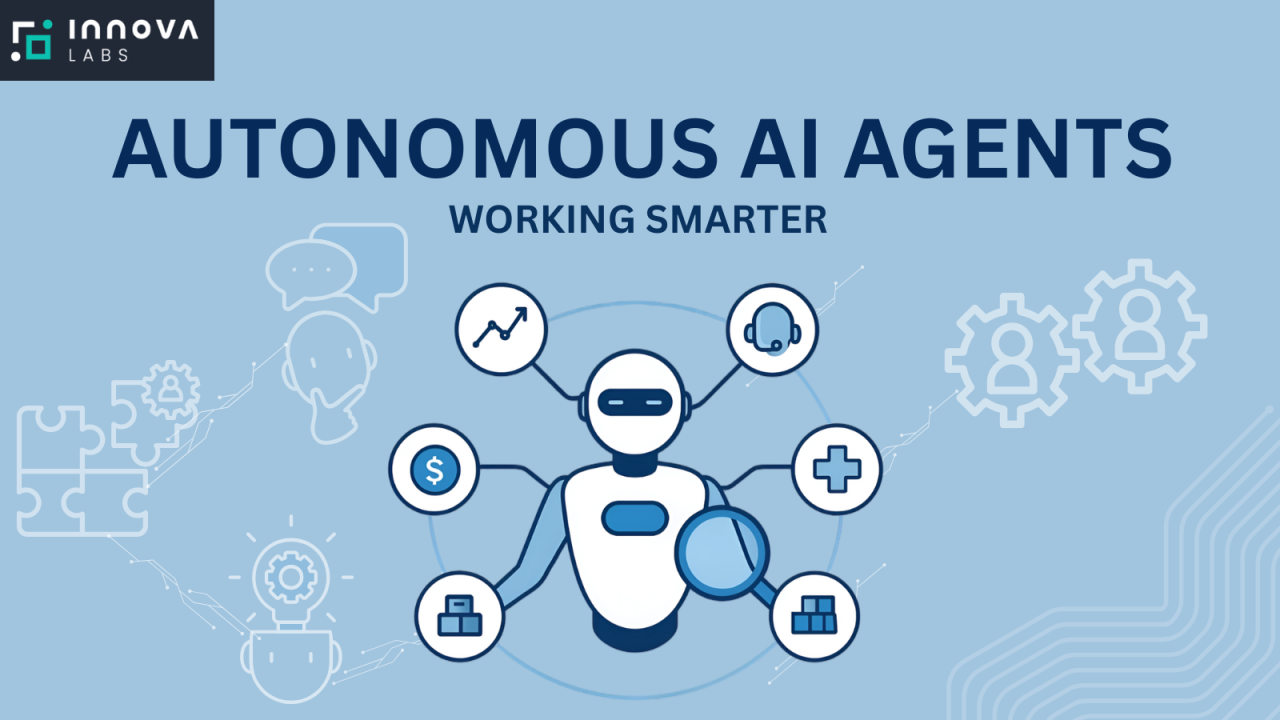IBM AI Team Releases Granite 4.0 Nano Series: Compact and Open-Source Small Models Built for AI at the Edge
Quick summary: IBM has unveiled Granite 4.0 Nano, a family of very small, Apache-2.0–licensed language models designed to run on-device, in browsers, and at the edge. The Nano series (models in the ~350M and ~1B parameter range, plus hybrid micro variants) uses IBM’s hybrid Mamba/Transformer approach to squeeze high instruction-following quality and long-context capabilities into a tiny memory footprint — enabling low-latency, private, and cost-efficient AI for real-time and offline scenarios. IBM+1
Why Granite 4.0 Nano matters
The last few years of AI progress have often equated “better” with “bigger”: larger transformer stacks, more parameters, massive compute budgets. That strategy delivered dramatic capabilities — but it also created practical limits: high latency, expensive GPUs, and centralized inference that raises privacy and regulatory concerns.
Granite 4.0 Nano intentionally goes the other way. By designing very small, highly optimized models that still retain strong instruction following and useful reasoning ability, IBM’s Nano series targets use cases where latency, cost, privacy, and operational simplicity matter most: on-device assistants, industrial controllers, factory-floor analytics, mobile customer support bots, embedded medical interfaces, and browser-based apps that must work without a server round trip. The result is AI that’s closer to users — faster, cheaper to run, and able to operate with data that never leaves the device. IBM+1
The technical approach: hybrid architecture and extreme efficiency
What makes the Nano series possible is a combination of architectural choices and careful engineering:
-
Hybrid Mamba / Transformer design: Granite 4.0’s family uses a hybrid approach that blends state-space modeling (Mamba/Mamba-2 style blocks) with traditional transformer attention. This allows the models to preserve long-context handling and sequential reasoning while dramatically cutting working memory and compute needed for inference — IBM reports memory reductions of more than 70% compared with similar architectures in some Granite 4.0 variants. That efficiency is exactly what lets sub-1B models offer surprisingly capable behavior. IBM+1
-
Multiple size points and variants: The Nano family includes a set of tiny and micro models around ~350M and ~1B parameters (with both base and instruction-tuned variants), as well as hybrid micro options to support different runtimes and compatibility constraints. Those multiple size points let developers pick the right trade-off between throughput, memory, and capability. huggingface.co+1
-
Memory and runtime optimization: The models are engineered for low RAM and CPU/GPU use and ship with binaries / weights that are compatible across common small-model runtimes (e.g., llama.cpp in constrained environments, and higher-performance runtimes such as vLLM when low latency and throughput are required). That makes it practical to run meaningful inference even in browsers or on modest laptops. huggingface.co+1
The upshot: count-and-size alone no longer determines whether a model is useful; architecture and runtime integration do. Granite 4.0 Nano is IBM’s bet that hybrid design and practical engineering yield better utility for many real-world edge workloads.
What’s in the release (models, licensing, tooling)
IBM released the Nano family as part of the broader Granite 4.0 suite, and the launch has several noteworthy pieces:
-
Model sizes: Public details indicate models in the Nano line at roughly 350M and 1B parameters, offered in base and instruct-tuned variants — giving developers light and slightly heavier options for device and server deployments. huggingface.co+1
-
Open licensing: Granite 4.0 Nano is available under the Apache-2.0 license, keeping the weights and code permissive for both research and commercial use. Open licensing matters for enterprises and open-source deployers who want to avoid restrictive license strings while retaining freedom to adapt and ship. huggingface.co
-
Wide runtime and platform support: IBM and community partners have provided model formats and optimizations so the Nano models run in browsers, on embedded Linux devices, on commodity laptops, and on server runtimes (llama.cpp, vLLM, and similar tooling). The Hugging Face Granite collection shows preconverted artifacts and community adapters for various inference stacks. huggingface.co+1
-
Governance and provenance: IBM is pairing the open release with measures to encourage safe deployment: signed checkpoints, documented model cards and governance guidance, and commitments to external security auditing and responsible-AI practices. For enterprises that worry about provenance and supply-chain risk, such measures are intended to make open models more trustworthy. IBM+1
Performance and capabilities — surprising power for their size
Readers should temper expectations — Nano models are not replacements for multi-billion parameter instruction-engines when it comes to open-ended creativity or deep multi-step reasoning — but the release highlights where they excel:
-
Strong instruction following for routine tasks: IBM shows that well-tuned, small models can do excellent work on classification, summarization, template-driven customer support responses, and function-calling (extracting structured content from user inputs). These are high-value functions for many applications where latency and privacy are more important than “GPT-style” breadth. IBM+1
-
RAG and retrieval workflows: When coupled with retrieval-augmented generation (RAG) stacks, Nano models perform well on grounded QA and small RAG tasks. The smaller memory needs mean expensive vector databases and heavyweight runtime orchestration can be simplified, enabling on-device retrieval in some scenarios. IBM
-
Latency and throughput: Because of the low memory footprint, Nano models offer fast cold startup, lower inference latencies in constrained environments, and higher concurrency on the same hardware budget — a practical win for mobile apps and multi-tenant on-prem deployments. IBM
Independent reporting and hands-on tests (from early community adopters and press previews) confirm that these tiny models can be used for many “edge” tasks with acceptable accuracy and excellent responsiveness — enough to open up new classes of applications that previously required server-side inference. Venturebeat+1
Real-world use cases: where Nano shines
Here are concrete problem areas where Granite 4.0 Nano is likely to be a practical choice:
-
On-device assistants and accessibility tools: personal note summarizers, typing aides, and accessibility overlays that must keep user data local for privacy or offline operation. Low memory means these features can run on phones or mainstream laptops. huggingface.co
-
Industrial edge and IoT analytics: factory controllers, industrial sensors, and embedded consoles that need real-time decision support without a round trip to a cloud. The models’ low latency and reduced compute make local anomaly detection and automated commentary feasible. IBM
-
Browser-based apps and progressive web apps: Nano models can be converted to WASM or similar formats to run client-side, enabling new privacy-first web experiences where user inputs never leave the browser. Reports indicate browser-level deploys are already feasible. Venturebeat+1
-
Customer support micro-agents: short, deterministic tasks like classifying tickets, creating canned responses, extracting entities, or routing queries — tasks where instruction tuning and prompt templates can give tiny models outsized value. IBM
-
Healthcare and regulated domains with sensitive data: on-prem inference is often a regulatory requirement; smaller models that can be audited, sandboxed, and run within hospital systems reduce the risk of data leakage while still providing NLP utilities. IBM explicitly positions Granite 4.0 for enterprise governance. IBM
Deployment considerations: pick your runtime and tradeoffs
Deploying tiny models is often easier than large ones, but still requires attention:
-
Runtime selection matters: for very constrained devices,
llama.cppstyle runtimes (or WASM conversions) provide compatibility at extremely low resource use. For better latency and throughput on commodity GPUs/CPUs, vLLM, accelerated backends, or optimized ONNX builds are preferable. IBM and the community provide artifacts for multiple runtimes. huggingface.co+1 -
Quantization and precision: aggressive quantization (4-bit, 8-bit) further reduces memory and compute, but can impact the subtlety of outputs. IBM’s docs and community posts highlight quantization workflows that preserve instruction quality for the Nano family. IBM
-
Function calling & tool use: small models can handle structured tool-calling when properly instruction-tuned and when the tool interface is kept simple. Complex multi-tool orchestration may still favor larger models or hybrid designs where a small model handles routing and a larger model handles deep reasoning. IBM
-
Benchmarking for your task: as always, run task-specific evaluations. A 350M model tuned for extraction can beat a general 1B base model on specific measures; measure latency, token costs, and accuracy on production-like data. techrepublic.com
Governance, provenance, and enterprise readiness
One of the most interesting parts of IBM’s strategy is pairing open models with enterprise-grade governance:
-
Signed checkpoints and provenance: IBM has emphasized cryptographic signing and verifiable checkpoints to help organizations validate model authenticity — an important step for enterprises worried about tampered weights or malicious forks. IBM
-
Responsible AI posture: Granite 4.0 is presented alongside IBM’s broader responsible AI controls and documentation (model cards, risk guidance, and auditing suggestions), which lowers the barrier for regulated industries to test open models. That makes plausible a world where enterprises run audited, open models in production. IBM
-
Certification and external programs: some reporting suggests IBM is pursuing or advertises compliance and independent assessments to build confidence among CIOs and compliance officers — an important signal for adoption in conservative sectors. Medium+1
Community and open collaboration
Because Granite 4.0 Nano is released under Apache-2.0 and is available through places like Hugging Face, the community can:
-
port models to new runtimes and accelerators,
-
create fine-tuned variants for specific verticals,
-
publish quantized artifacts, and
-
contribute security reviews and benchmarks.
Hugging Face collections already show Nano artifacts and community adapters, which helps accelerate real-world experiments and fosters a plugin ecosystem for edge inference. The combination of IBM’s engineering plus open contributions is likely to speed adoption. huggingface.co+1
Limitations and realistic expectations
No release is a silver bullet, and Granite 4.0 Nano has natural limits:
-
Not a substitute for large, general-purpose models: if your application needs deep, multi-step reasoning across very broad knowledge or creativity at scale, larger models still have the edge.
-
Task specialization needed: small models often require careful instruction tuning, prompt engineering, or lightweight RAG to hit acceptable accuracy on domain tasks.
-
Quantization tradeoffs: extreme quantization is attractive for resource savings but may degrade nuanced outputs; testing is essential.
-
Security & adversarial risks remain: signing and audits reduce but do not eliminate risks; adversarial inputs, data poisoning and model-extraction attacks are still real concerns at all scales.
Being pragmatic — pairing small models with the right orchestration and fallbacks — is the key to success.
What this release signals for the industry
Granite 4.0 Nano is emblematic of several broader trends:
-
The move to right-sized AI: Efficiency and smart architecture can outcompete raw scale for many applications — especially when cost, privacy, and latency matter.
-
Edge-first deployment thinking: Expect more vendors and open projects to optimize for on-device inference, enabling offline, low-latency AI experiences.
-
Enterprise acceptance of open models: IBM’s emphasis on governance, signed artifacts, and certifications pushes open models into more conservative IT stacks.
-
Ecosystem interoperability: As models arrive in formats friendly to vLLM, llama.cpp, ONNX, and browser runtimes, developers will have more choices for where and how to run inference.
If these trends hold, we’ll see a wave of new applications that were previously infeasible due to latency, cost, or privacy constraints. IBM+1
Getting started: a pragmatic checklist for engineers and product teams
If you want to experiment with Granite 4.0 Nano, here’s a short starter checklist:
-
Define the task and acceptable metrics (latency, accuracy, privacy).
-
Pick the smallest model that meets the metric (try both the ~350M and ~1B variants). huggingface.co
-
Choose a runtime based on environment:
llama.cppor WASM for browsers, vLLM/optimized ONNX for servers. huggingface.co -
Quantize carefully: start with standard 8-bit pipelines and test 4-bit only if needed.
-
Add retrieval or tool wrappers for tasks requiring fresh knowledge or deterministic outputs. IBM
-
Audit and sign artifacts in your CI/CD and apply the governance guidelines recommended by IBM. IBM
Conclusion
Granite 4.0 Nano is not a flashy “bigger is better” headline — it’s a practical, engineering-driven release that makes high-utility AI possible where it previously was impractical: on phones, in browsers, and at the edge. By combining a hybrid Mamba/Transformer architecture, careful instruction tuning, permissive Apache-2.0 licensing, and broad runtime support, IBM has created a set of models that should accelerate device-level AI adoption across industries that value latency, privacy, and cost-efficiency.
For product teams, the message is clear: the frontier of useful AI is no longer only large cloud models. Right-sized, well-engineered small models like Granite 4.0 Nano will increasingly power everyday assistant features, industrial controllers, and privacy-sensitive applications — and the open, community-friendly release model makes it straightforward to experiment and iterate.
Sources & further reading
-
IBM announcement and Granite 4.0 overview. IBM+1
-
Hugging Face blog post introducing Granite 4.0 Nano. huggingface.co
-
VentureBeat coverage on Granite 4.0 Nano’s local/browser deployability. Venturebeat
-
MarkTechPost summary and early commentary. MarkTechPost
-
Hugging Face model collection and community assets. huggingface.co
For quick updates, follow our whatsapp –https://whatsapp.com/channel/0029VbAabEC11ulGy0ZwRi3j
https://bitsofall.com/https-yourblogdomain-com-microsoft-releases-agent-lightning/
Liquid AI’s LFM2-VL-3B Brings a 3B-Parameter Vision-Language Model (VLM) to Edge-Class Devices







